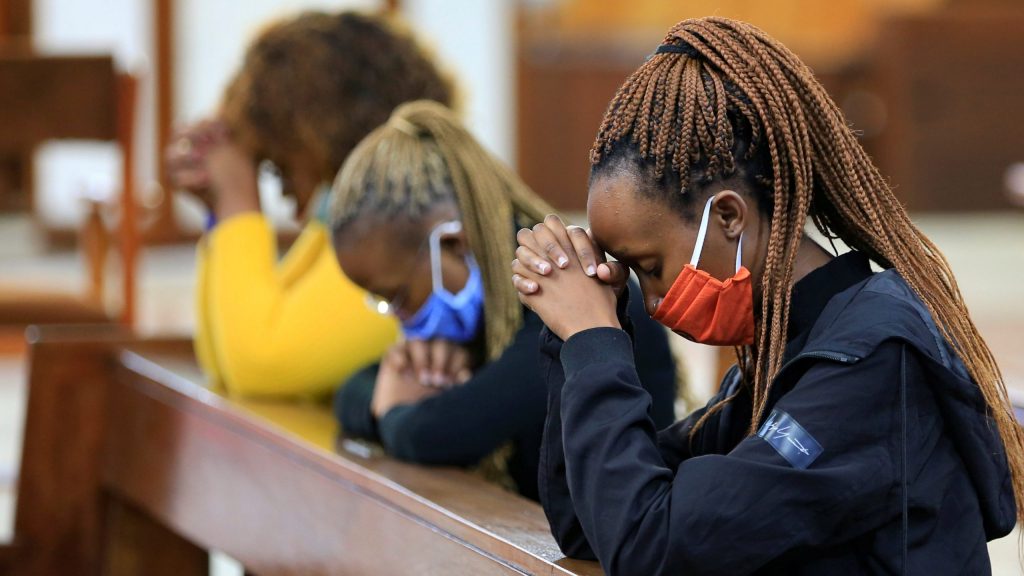ROME — Recently a team of 39 researchers, mostly Africans and Brits, set out to try to explain why Africa has been largely spared the horrors of the COVID-19 pandemic — relatively low numbers of cases and deaths, and no widespread spike in hospital admissions pushing health systems to the brink of collapse.
Based on a study of blood donors in Kenya published in “Science,” the researchers found that 4.3% had the antibodies to the COVID-19 novel coronavirus, basically the same as the rest of the world, meaning that the virus is just as prevalent as anywhere else. What’s different is the number of reported cases, 78,500, and the remarkably low number of deaths, just 1,409, as of Nov. 24. Compare Kenya, with a population of 51 million, to Spain, with 46 million people, as well as 1.58 million COVID-19 cases and more than 43,000 deaths.
In other words, these are two countries with roughly the same populations and prevalence rates, yet Spain’s death rate is a stunning 35 times higher.
In terms of explaining the difference, any number of factors may come into play: Africa’s long experience of combating diseases such as Ebola; the fact that many African governments took decisive measures early on to combat transmission; broad public support for the use of safety precautions; and others. The research team, however, pointed to one consideration above all: demography.
In Kenya, just 3.9% of the population is over the age of 65, while in Spain it’s 20%, and in Italy, with more than 51,000 COVID-19 deaths, the share of the population over 65 is 23%.
It’s not that young people are immune to COVID-19, of course, but they’re more likely either to remain asymptomatic, or for their symptoms to be sufficiently mild they never seek treatment, explaining the discrepancy between the prevalence rate and the caseload. They’re also much less likely to die from the disease.
The 19th-century French philosopher Auguste Comte, who essentially invented the discipline of sociology, famously observed that “demography is destiny.” COVID-19 would appear to be compelling proof of the point with regard to Africa — and so, as it happens, is the Catholic Church.
Overall population growth, especially pronounced in sub-Saharan Africa, is reshaping the global Catholic map. Here’s the current list of the Top Ten Catholic countries in terms of population:
- Brazil
- Mexico
- Philippines
- United States
- Italy
- France
- Colombia
- Poland
- Spain
- Democratic Republic of the Congo
It’s an arresting exercise to look down the line to the year 2050, drawing on population projections from the United Nations Population Division, and presuming that the Catholic percentage in each nation will remain more or less the same. This may overestimate the Catholic population in Latin America, where Catholicism is losing members to both Pentecostalism and to religious indifference, and in Europe, where secularization continues to eat away at Catholic faith and practice.
It almost certainly underestimates the African totals, where growth in Catholicism is outpacing overall population growth. Nevertheless, based on this formula, here is the projected list of largest Catholic nations in 2050:
- Brazil
- Mexico
- Philippines
- United States
- Democratic Republic of the Congo
- Uganda
- France
- Italy
- Nigeria
- Argentina
Three African nations — Democratic Republic of the Congo, Uganda, and Nigeria — will take their place among the largest Catholic nations in the world. Among the traditional Catholic powers these new African behemoths will dislodge are Spain and Poland, two cornerstones of the old European Christendom. Seven of the 10 largest Catholic nations in the world will be in the global South.
During the 20th century, the Catholic population of sub-Saharan Africa went from 1.9 million to more than 130 million — a staggering growth rate of 6,708%. The early 21st century has seen no reversal of form, as the African share of the global Catholic population continues to surge. In 1910, Africa represented less than 1% of the world’s Catholic population; today it’s 19.2% and climbing.
The same observations can be made about vocations, as the African share of the world’s priesthood and episcopacy is also steadily increasing.
All this is because COVID-19 isn’t the only plague Africa has been largely spared. Western-style secularism is also missing in Africa, where levels of religious faith and practice remain robust by global standards. In Italy, traditionally the cradle of Western Christianity, 23% of the population says religion is important in their daily lives, according to Pew Research data; in Nigeria it’s 82%, and in Ghana 89%. Catholics in Africa are also far more likely to pray daily, to attend Mass at least once a week, and to report spiritual and supernatural experiences.
All this points to a looming “African moment” in Catholicism, potentially as sweeping and significant as that moment in the first century when St. Paul left the Middle East for Asia Minor and then Greece and Rome, thereby transforming Christianity from a Palestinian sect of Judaism into a global community of faith. Its consequences are impossible to predict, but there’s no question that the epicenter of whatever growth the Catholic Church experiences through the rest of the century will be south of the Sahara.
Africa’s dynamic demography largely has saved the continent from the worst of the pandemic. What remains to be seen, at least in Catholic terms, is whether it will also save the Church.

